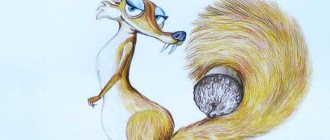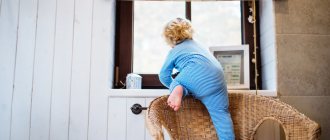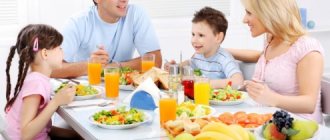Summary of a conversation with children 4-5 years old “Harmful and healthy food”
Summary of a conversation with children of the middle group “Junk and healthy food”
Target:
formation of basic ideas about a healthy lifestyle.
Tasks:
1. To develop children’s knowledge about proper and rational nutrition.
2. Introduce children to the concept of “vitamins”.
3. Instill in children the desire and need to be healthy.
Material:
illustrations of vegetables and fruits, junk food, doll, plates (green and red)
Progress of the conversation.
Children sit in a semicircle on chairs.
- Guys, today the doll Masha came to visit us, and she came for a reason, but to ask us for advice. Her little sister had a stomach ache because she ate a whole box of chocolates. Guys, is it possible to eat a whole box of chocolates at once? (No you can not.)
“Let’s figure out together which foods are healthy and which are harmful and tell Masha how to cure her sister.”
— Guys, why do you think a person needs food? (To grow, be strong and healthy). If children find it difficult to answer, ask leading questions. — Do you think food is needed to grow? And to be strong and healthy?
- Is all food good for our health? (No, not all food is healthy).
- Yes you are right. Then tell me, what healthy products do you know? (Vegetables, fruits, porridge).
- Yes, these products are very useful, because they contain vitamins. Now I will tell you which vitamins are needed for what. Vitamin A is important for vision. It is found in carrots, fish, sweet peppers, eggs, and parsley. Our heart needs vitamin B. It is found in meat, milk, nuts, bread, chicken, and peas. Vitamin C helps fight colds. It is found in citrus fruits (oranges, lemons, cabbage, onions, radishes, currants. Vitamin D helps strengthen our bones. It is found in fish and fish oil. The teacher shows the called products in the pictures.
- That's how many useful products I named. Now think about it: are chocolates, chips, sparkling water healthy foods? (No, these are harmful products).
- Yes, guys, these products are harmful to health. If you eat a lot of them, you can get sick, like Masha’s sister.
- Now, children, let's play a little. I have a green plate and a red one on my table. We will put healthy products in the green one, and harmful ones in the red one. The teacher invites the children to the table where pictures of the products are laid out in advance. Children take two pictures, take turns coming to the table, and decide which plate to put the pictures on. When all the pictures are laid out, the children sit on the chairs. The teacher, together with the children, examines whether the pictures are laid out correctly; if not, he asks the children to explain why, and motivates the children to give a complete answer. If the child cannot formulate a complete answer, the teacher helps him and asks him to repeat.
- Well done, guys, now Masha and we have learned which foods are good for our health and which, on the contrary, are harmful. Masha says “thank you” for your help, she will definitely tell her sister what to eat to be healthy and not get sick
Determination by quantity and characteristic
The game is intended for older preschoolers with serious speech impairments and for kindergarteners of the younger group as a means of improving the grammatical and lexical structure of speech.
To play, you need to prepare cards of 3 categories:
- numeric values;
- Food;
- their external and qualitative characteristics.
Lay out the cards in a row of 4 pieces: a numerical value, two characteristics, the product itself. The child must make a sentence based on the pictures.
For example, the first card shows the number 2, the second shows a chocolate bar, the third shows a tongue licking its lips as a symbol of sweetness, and the fourth shows a cupcake. First, the player must pay attention to the first and last cards, name the numeral and product, and agree on the number. That is, “two cupcakes.” Next, give the object characteristics: what kind of cupcake? – chocolate and sweet. Finally, the child must clearly pronounce the sentence: “Two chocolate sweet cupcakes.”
Guess the product
The game is based on the principle of solving riddles. Say a definition appropriate to the topic, and the children must guess what it is about.
Here are examples:
- berries boiled with sugar are... jam, preserves;
- a jelly treat with fruit flavors is... marmalade;
- a piece of loaf with butter is... a sandwich;
- finely chopped vegetables seasoned with vegetable oil are... salad;
- chocolate powder with milk is... cocoa.
Clap and Stomp
This game involves moderate mobility, promotes general physical development, improves memory and concentration.
The game is built on the principle of forfeits. The presenter names foods that can be eaten without cooking and those that require cooking before consumption. Having heard the names of products of the first type, children should raise their hands and clap their hands. And in the second case, stomp your foot. The player who made a mistake in identifying the product works off a forfeit: he performs a funny task that will be given to him by the presenter or one of the other players.
Grocery store
For the game, prepare containers left over from various food products. Each package must have a pair, that is, you need, for example, two milk cartons, two yogurt jars, and so on. It is not necessary that these packages be identical, the main thing is that they should be recognizable from the same product.
Organize a grocery store. Give the students one of the paired packages. Place the rest of the container on the makeshift counter. Each child takes turns approaching the counter, examining the “products,” and looking for packaging similar to their own. In the older group, a preschooler can tell what food is sold in such containers and what benefits it brings to the body.
Say it right
The game, intended for the senior preschool group, develops analytical thinking and concentration, and improves the grammatical structure of speech. Pronounce the sentences incorrectly, and the students must take turns correcting the phrases:
- mother cooked barley porridge - mother cooked pearl barley porridge;
- dad ate beet salad - dad ate beet salad;
- Olya enjoys creamy ice cream - Olya enjoys creamy ice cream;
- Denis drank apple juice - Denis drank apple juice;
- grandma bought ground beef - grandma bought ground beef;
- Sveta warmed up a chicken cutlet for lunch - Sveta warmed up a chicken cutlet for lunch;
- mom baked a cherry pie - mom baked a cherry pie;
- grandfather wanted milk porridge - grandfather wanted milk porridge.
Didactic game “Healthy Products”
For the game, make two tables with equal cells: one – “Healthy foods”, the second – “Harmful foods”. Also cut out cards representing all kinds of food. The size of the cards should correspond to the table cells.
The purpose of the didactic game “Healthy Products” is to get acquainted with different types of food, its effect on the body, the content of vitamins and other important substances in it, and to foster a careful attitude towards health.
Shuffle the cards, ask the students to correctly arrange them in the table cells. Each child takes turns taking a picture, naming the product, saying whether it is harmful or healthy, and placing the card on the cell. If older preschoolers play, they must give a detailed answer as to why they consider this food harmful or healthy. If the player makes a mistake, it is important to gently guide him to the correct answer and explain why he should not eat junk food.
What's in the pan
Pupils stand in a circle and imitate a saucepan. The host says what dish he will prepare now. Children remember what a dish consists of, assign to themselves the name of a specific product, but do not say it out loud. Next, the presenter says what he puts in the pan. The player who hears his name runs out to the center of the circle, dragging with him the comrade who follows the direction of the arrow. Once “in the pot,” the comrade says who he has appointed himself to be. It happens that a player makes a mistake and assigns himself a product that is not suitable for the specified dish. Then everyone has fun and explains why their friend was wrong.
Continue the sentence
The game for the preparatory group teaches you to think logically and correctly construct detailed phrases. Start sentences and let the children take turns finishing them:
- It’s impossible to eat soup or porridge without a spoon;
- You cannot pour boiling water into a glass container, because... the glass will crack and burst;
- if you eat only hamburgers and chips, then... you will get sick, gain weight, and spoil your digestion;
- if you eat little, then... you will grow thin, get sick, weaken;
- about an egg that has been boiled for a long time, they say that it is... hard-boiled;
- vegetable salad is seasoned with... sour cream, mayonnaise, vegetable oil;
- whoever eats a lot of sweets, his teeth... quickly decay;
- To avoid choking, you cannot talk while eating;
- In order for the body to receive a lot of vitamins, you need to eat... fruits and vegetables;
- to extend the shelf life, bread and loaf are placed... in a bread bin;
- To prevent milk from turning sour, it is stored... in the refrigerator;
- if you mash boiled potatoes, you get... mashed potatoes;
- tea becomes sweet because... sugar is added to it.




